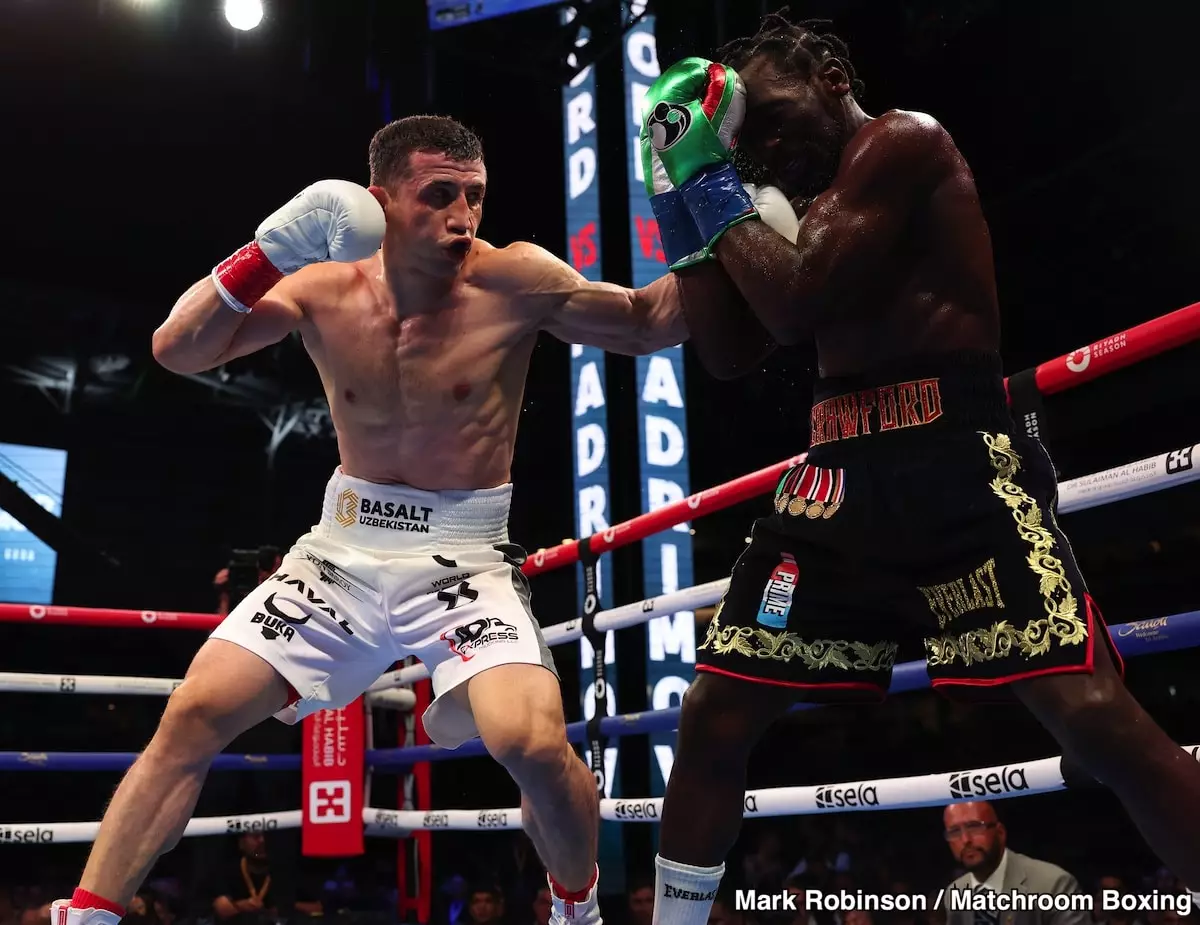The world of boxing is continuously evolving, and with it, the expectations placed upon its athletes, particularly champions like Terence Crawford. Recently, Roy Jones Jr., a legendary figure in the sport, weighed in on Crawford’s underwhelming performance against Israil Madrimov, suggesting that the root of Crawford’s struggles lay not in a lack of motivation but rather in the factors surrounding his opponent and Crawford’s own age. As fans dissect this matchup and its implications, it becomes essential to explore the nuances of Crawford’s fighting style, age considerations, and the broader context of their fight.
Crawford, with an impressive professional record of 41-0 and 31 knockouts, faced Madrimov, a junior middleweight champion boasting just ten professional fights at the time. Jones asserts that this disparity could have led to a lack of inspiration for Crawford, who may have viewed Madrimov as an unthreatening opponent. This raises an important question: does a fighter’s perception of their opponent significantly impact their performance?
Crawford has made his mark in the boxing world, having cleaned out multiple divisions. However, against Madrimov, he encountered a challenger with an extensive amateur background, underscoring the notion that experience doesn’t only stem from professional bouts. Madrimov’s 300 amateur fights provided him with the tactical finesse and ring intelligence that could easily disrupt a fighter unprepared for his skills. This was significant not just for Crawford’s performance but also reflects a broader trend in boxing where amateur success translates effectively into the professional arena.
As fighters age, their physical capabilities and reflexes often slow down, a phenomenon that no amount of training can entirely counteract. At 37, Crawford is closer to the end of his prime than the beginning, facing the reality that his body cannot respond as it once did. Jones highlighted that a fighter of Crawford’s age, who has fought sporadically over recent years, may not be able to maintain the same competitive edge when facing younger, vigorous opponents.
Crawford’s relative inactivity in recent years could have contributed to what some would consider a decline in performance. When combing through his history, one finds that he had not faced a genuinely formidable opponent in a while. Thus, when confronted with a less experienced yet skilled Madrimov, it is plausible that Crawford found it challenging to switch gears and adapt to a real challenge. This raises vital discussions about longevity in sports and how the balance of preparation, motivation, and physical condition intertwine to showcase the best version of an athlete.
Future Challenges: Moving Up and the Canelo Matchup
Looking ahead, the anticipated clash between Crawford and Canelo Alvarez has stirred excitement among boxing enthusiasts. However, skepticism remains about Crawford’s ability to transition effectively to the super middleweight division, considering the challenges he faced against Madrimov. Jones Jr. expressed that Crawford would have a much easier time finding the motivation to prepare for Canelo—a bout that carries far greater significance than a matchup with Madrimov—suggesting that the stakes significantly impact a fighter’s mentality.
Nonetheless, many argue that there is an underlying perception that Crawford is seeking a financial windfall rather than a legitimate challenge against Canelo. It is critical to question if he can truly compete at the 168-pound level against robust opponents like David Benavidez or Caleb Plant. By failing to demonstrate ambition in moving up and facing these challengers, Crawford ignites doubts about his motivations and capabilities.
This brings us to the broader narrative within boxing, where ambition and work ethic often dictate a fighter’s legacy. While receiving lucrative offers may be alluring, it remains essential for Crawford’s credibility to chase achievements beyond financial gain.
The dialogue surrounding Terence Crawford’s performance against Israil Madrimov serves as a critical reflection on age, preparation, and the nature of competition in boxing. Roy Jones Jr.’s insights resonate with many boxing enthusiasts, but as Crawford’s career progresses, it is vital for him to rise to the occasion, confront his challenges head-on, and prove that he is worthy of the championship accolades that have been bestowed upon him. Whether he seeks true legacy-building fights or remains engulfed in the allure of financial motivations could very well define the final chapters of his illustrious career.

